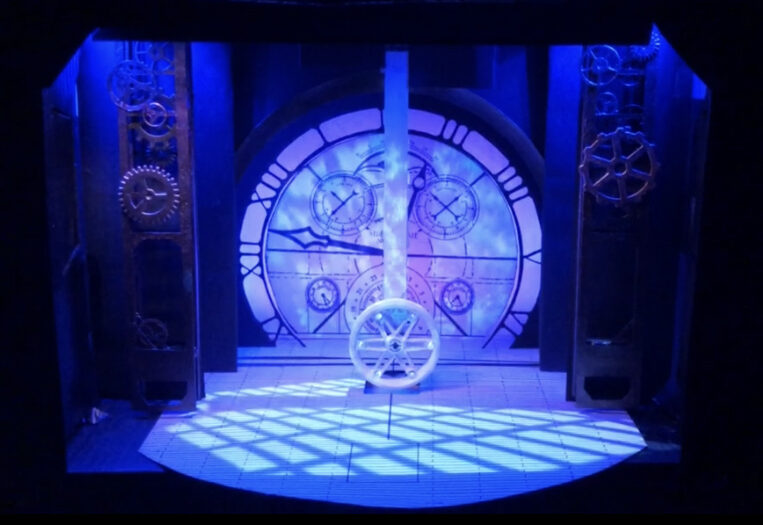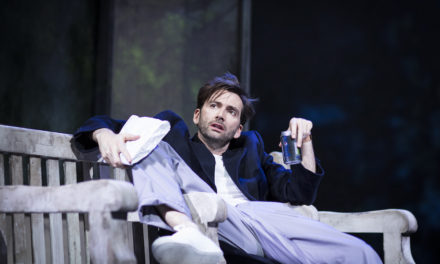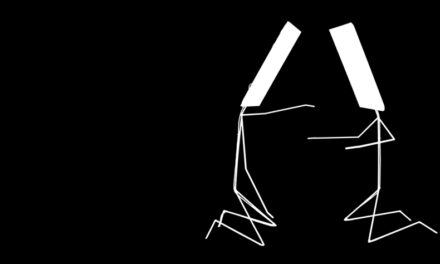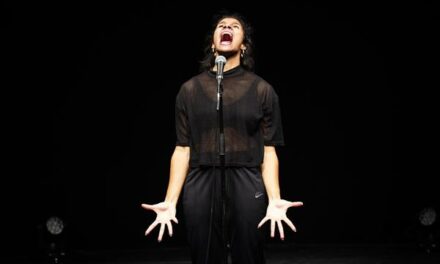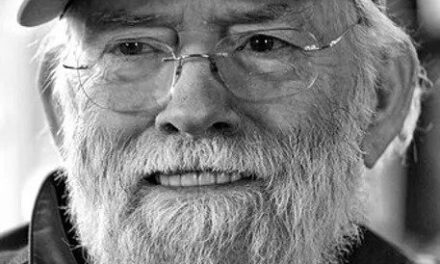Recently a friend sent me a message that read,
“I’m not sure if you have TikTok, but something has been going around. Users are making a Ratatouille musical and I thought you’d appreciate someone’s scenic design contribution.”
I downloaded the TikTok app and followed a link. What I encountered was a video of a small stage featuring a two-dimensional profile of a young chef, complete with white toque atop his head. A timpani roll blossomed into a full orchestral entr’acte as patterned light swirled on the backdrop. When the music settled, the stage was washed in a deep blue hue and an animated silhouette of a rat appeared atop the chef’s head. Suddenly, the hat flew away, leaving a toque-shaped hole in the backdrop, through which a dancing three-dimensional rat was picked out by a spotlight. The music shifted to a conspiratorial whisper and the drop flew away to reveal the rat held aloft on a pile of garbage. When the orchestra swelled again, both rat and garbage pile ascended into the flies, revealing the Parisian skyline through giant windows, silhouetted against a sunset–sky. At the same time, a long dining table draped in white linen glided downstage on a rotating, black and white checkered floor to the thrill of English horns and piccolos. There was artistry, nuance, and sensitivity of timing in the model’s performance. I was mesmerized.
I spent the next several hours on TikTok looking at more short videos of scenic model performances posted by Shoebox Musicals.
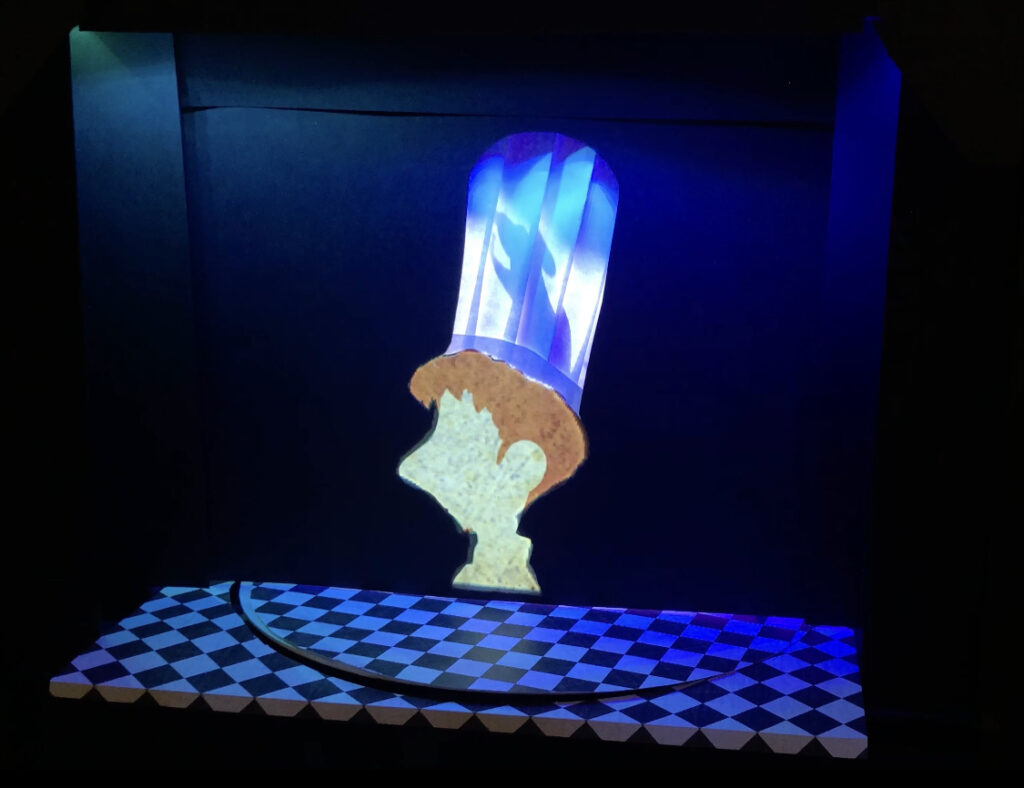
Shoebox Musical’s original set design for Ratatouille the Musical. Photo courtesy of Christopher Routh
Christopher Routh, a.k.a. Shoebox Musicals, is a professional, self-made photographer with a passion for musical theater. After he earned a degree in Theater with a concentration in acting from Muhlenberg College in Allentown, PA, he moved to New York City to fulfill his dreams of being on Broadway. But, like many struggling artists, Routh needed to find a side-hustle to help him survive. So he turned a hobby, photography, into a small business – Christopher Routh Photography – which made him just enough money to get by. That is, until the pandemic hit. “Suddenly, I was barely getting any work at all,” Routh said, “and my lease was up soon, so I decided to move back home to Chatham, NJ.” Thinking it would only be a short time before he’d be back in NYC, Routh found himself in his parent’s house, “out of work and bored out of his mind.” With too much time on his hands, he turned once again to a hobby.
Another aspect of theatre that has always fascinated Routh is set design. He recalls seeing his first Broadway show, The Lion King, and being amazed at how set pieces seemed to move on their own. “I’d never seen anything like it before! My family and I had just moved back to The States from Jakarta, Indonesia where we had lived for eight years. I had no idea Broadway existed. This was back in 2006. That’s when I really fell in love with musical theater and set design. I love the magic that can be created on stage, knowing that behind the facade is a whole network of mechanics, machinery and lights.”
To bring some of that theatre magic home with him, Routh started building set models – recreating Broadway shows he’d seen with his dad, from memory, in his bedroom. He found an old Aldo shoe box and used the top as a stage deck, and the rest of the box as the proscenium (this is where the name “Shoebox Musicals” comes from). It was a very small stage, and to light it, he used Christmas lights, wrapped in black paper to focus the light in one direction, and stuck them through the box. It did the trick! This was in 2009 during his senior year of high school and, although his set models brought him joy, he was afraid others would see his hobby as juvenile and silly. Embarrassed, he kept his set models a secret.
Once the pandemic hit, Routh, bored and craving live theatre, began to focus once again on creating sets, saying, “I’ve always had my stage model laying around – it had been sitting in my room for years.”
First, Routh recreated Fantasmic!, his favorite Disney Park Show, in his stage model. That took about two weeks to complete and after that, he moved on to Mary Poppins. Then he decided to recreate the iconic set design for Wicked. It was going to be a difficult task, but he says he felt up to the challenge. “I had nothing else to do at this point, so I just let my creativity start flowing. I took the whole theater apart and started from scratch, creating a whole new stage model! “He spent four weeks building it. During a five-day power outage, he worked by flashlight. “The design was all in my head so didn’t really plan much. I built scene by scene starting with the opening number.”
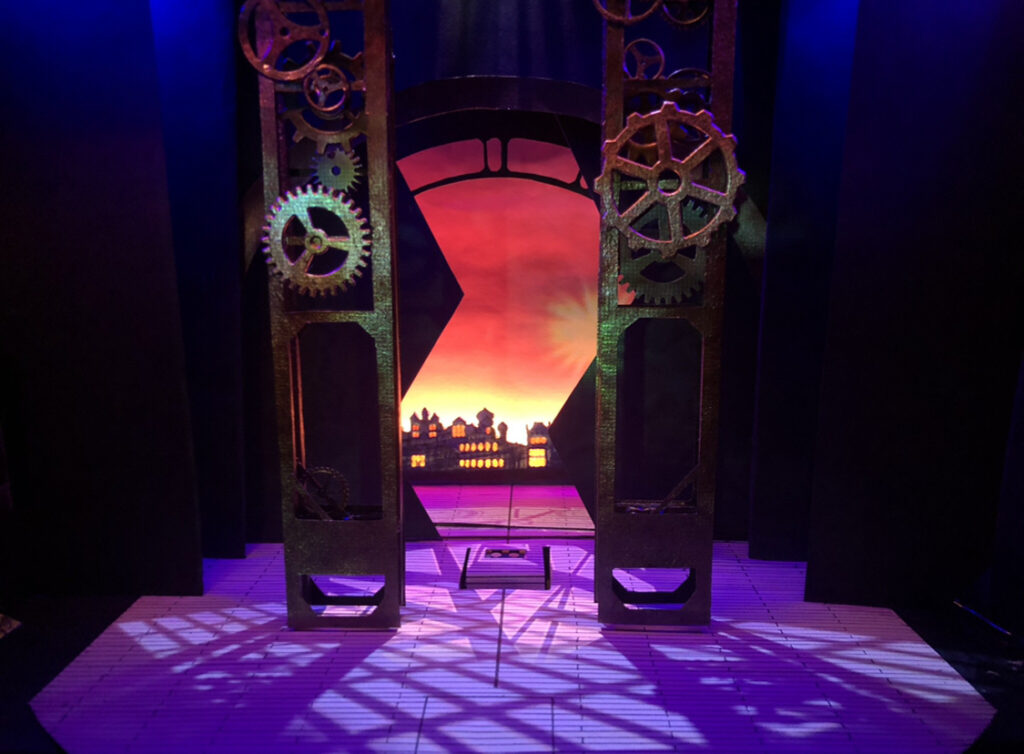
Shoebox Musical’s recreation of the Wicked set. Photo courtesy of Christopher Routh
Routh has no professional experience in set design. What he knows he taught himself by observing live theater and searching the internet. All Routh’s models are made with card stock, cardboard, super glue, some LEGO pieces and fabric – things you can find at any craft store. He says he doesn’t sketch anything out and he doesn’t work in a scale. “I just go by the dimensions of my stage model which are 15”x12”x10.” Sometimes he’ll make a mockup of a set piece to see if it will fit into his stage model before investing in the real materials. For example, when creating a scene for Wicked, he mocked up a backdrop with some wooden rods, tape and toilet paper for curtains.
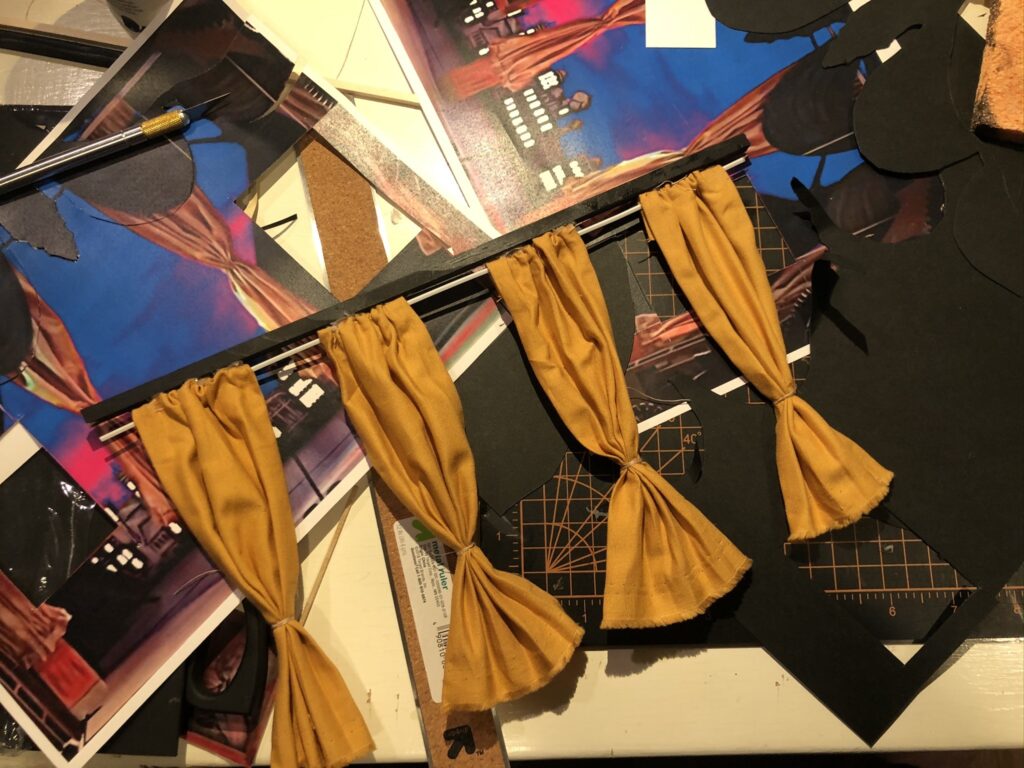
Photo courtesy of Christopher Routh
Some people believe that Routh’s set models are 3D generated but he wants to make it clear to everyone that they are all handmade and very real. When asked if he uses 3D modeling software, he replies emphatically, “No, no, no, that’s not fun at all! All my models are real. Handmade, hand-cut, hand glued, had designed. All by hand.”
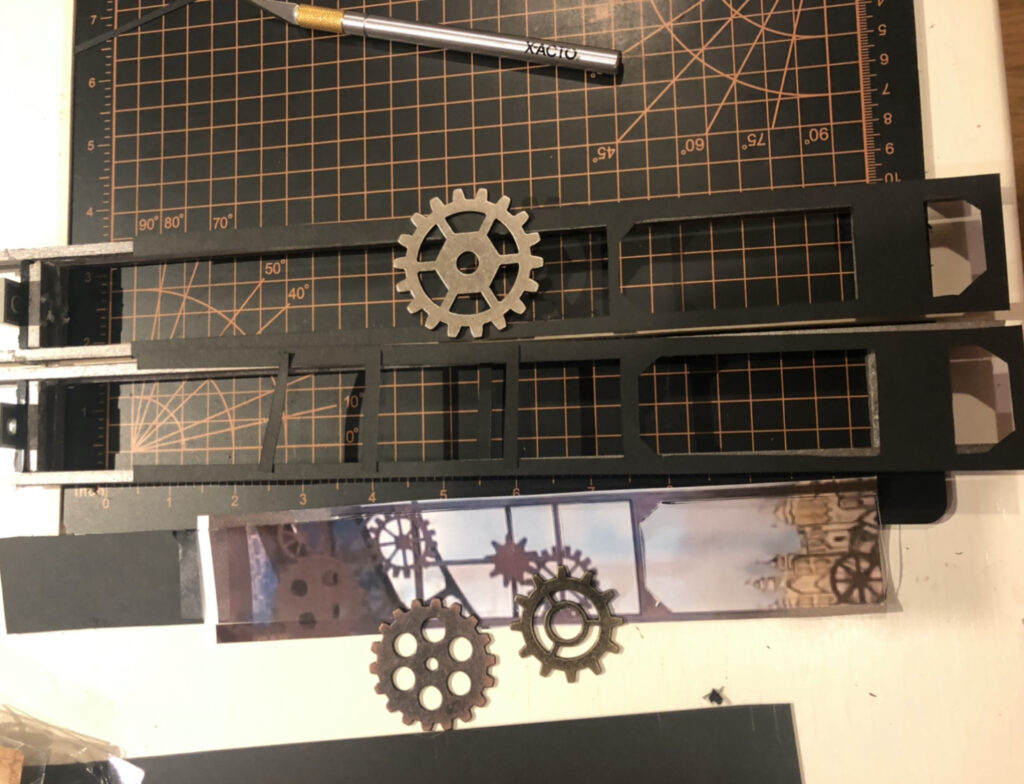
Photo courtesy of Christopher Routh
That said, there is some technology driving Routh’s models’ performances.
When Routh was young, his dad bought him “LEGO Mindstorms”. The toy enabled him to program robots he built himself using LEGOs and motors. He kept it, and when he needed to automate his scenic designs, he thought of using it. The first automation he built was a stage lift for the set model of Wicked. From there he found ways to use it to fly set pieces in and out, and to push them on and pull them off his cardboard stage. He’s even powered a tiny turntable. “I just got creative and had fun”, Routh said.
Routh insists that he is by no means a mechanic or engineer and that everything you see really isn’t all that complicated. “Anyone can do what I do. You just have to put a lot of time into doing it.” But, like any good magician, Routh doesn’t want to give away all his secrets. “The spectacle of theater has always been a mystery to the audience, so I don’t know if I’ll tell you too much!” I plan to keep Routh’s secrets, so suffice to say his wizardry comes from a canny combination of LED strip lights, projectors, phone apps, plastic tubing, mini-smoke machines, and the air from his own lungs.
Routh says Tech (the rehearsal period when all technical elements are incorporated into a performance) is the most stressful yet satisfying part of the whole process. “Having your design come to life is truly amazing, but tech week is also the worst. With Wicked, I programmed each set piece, and drop, and lift move to sync with the music so all I had to do was press play. I know this isn’t really like live theater where everything is individually called by stage managers and executed by stagehands, but I’m only one person. I still must do the lighting, special effects, and filming all at the same time.” Routh notes that during Tech things never go exactly as planned – cues get missed and set pieces break, “but that’s the beauty of it. It’s never perfect, that’s what makes it so real. You cannot edit live theater! I do several takes to make sure my videos go smoothly but I always leave in the imperfections so you can tell that the set models are real and that my performances are live. This is going to sound sad, but I cried when I finished ‘Defying Gravity’. I couldn’t believe what I had created. It felt like I was actually watching the show!”
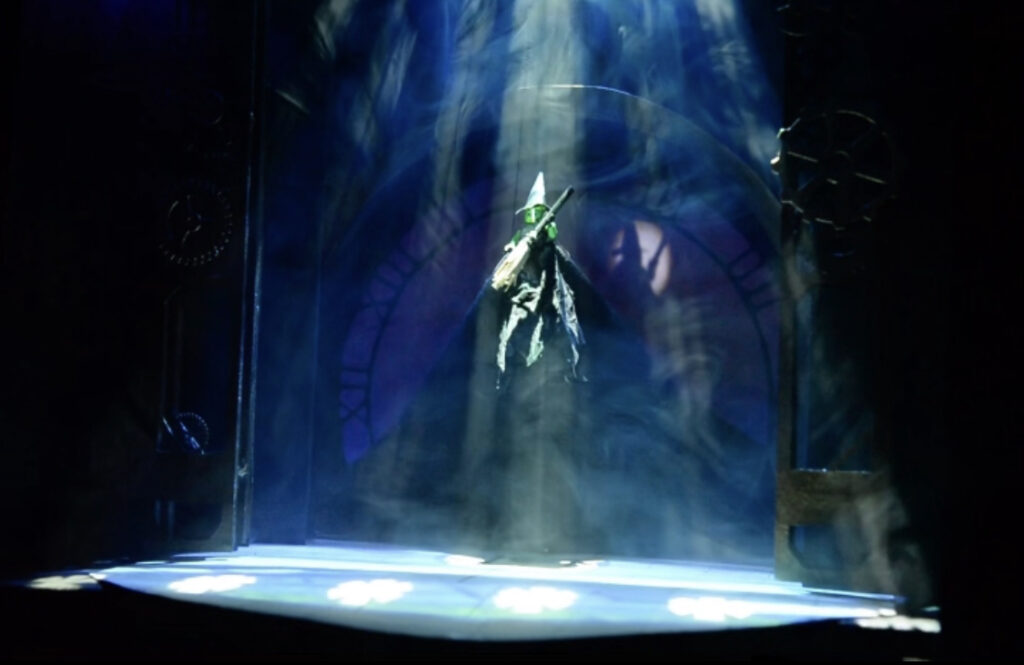
Shoebox Musical’s recreation of “Defying Gravity” from Wicked. Photo courtesy of Christopher Routh
Routh’s highly choreographed dance of objects makes him something of a master puppeteer. When I asked him about this he said, “I do feel like a puppeteer! I feel like a giant manipulating a miniature Broadway theater. My former roommate had a puppet, like one that you’d see in Avenue Q. I used to play around with it a lot. I got really good at it. I think it is a form of escapism. You put your body and soul into something inanimate and make it come to life!”
But can a scenic model be considered a puppet?
In a 2013 article by Joan Acocella for The New Yorker, avant-garde designer, director, performer and puppeteer Basil Twist gives a broad definition of a puppet. For Twist, “a puppet doesn’t have to look like a person or an animal – something specific. Anything inanimate that you animate is a puppet.” In other words, puppets can be abstract, and Twist has famously made puppets out of such unlikely objects as garbage bags, lengths of fabric, feathers, bubbles, and in one case, like Routh, a miniature theatre set.
In 2004 Twist created a piece called Dogugaeshi (pronounced DOH-goo-ga-EH-shee) for the Japan Society in New York City inspired by a rarefied nineteenth–century Japanese puppet tradition by the same name. Dogugaeshi is a technique in which a series of sliding screens which provide the background for a scene are changed out, in various dramatic ways, sometimes several of them in sequence, for dramatic effect or purely as spectacle.
Like Routh, Twist choreographed his performance in response to music – in this case the accompaniment was provided by master musician Yumiko Tanaka on the shamisen, a long-necked, three-string lute with a wooden body covered in animal skin. I was audience to a performance of Twist’s Dogugaeshi in 2004 and watched as scenic panels glided, crisscrossed, and flipped to reveal and conceal different parts of a tiny stage. Magically, the environment transformed repeatedly before my very eyes. Lights, in the form of candles, swayed back and forth to the music while animated projections filled the space. I was mesmerized, just as I was when I first encountered Routh’s work. In the hands of Twist and Routh, a set, manipulated by the puppeteer, becomes what scenographer and theatre theorist Edward Gordon Craig called an übermarionette – a “symbolic creature, made by the cunning of the artist” – that gives a performance as the primary actor.
When Routh finished the Wicked model, he took a trip to Maine because, he said, he “needed to get out of the house.” When he got back, he started to consider making a Tiktok account. “I was thinking there must be other people out there that are missing theater as much as I do. I wanted to share my work because I knew there were other theater geeks like myself longing to see a show again. That’s how the Shoebox Musicals TikTok account was born.”
Shoebox Musicals was instantly popular. Routh had about 17,000 followers and he was happy about that, but once Ratatouille the Musical hit, his videos went viral. “Suddenly, I started gaining thousands of followers in a day. I think in the span of two days I gained 33,000 followers. I never imagined so many people would see my work. I went from being an ‘in the closet’ set designer to having 70,000 followers and counting. I never wanted to be a viral sensation, I just wanted to share my work. But I’m so happy I’m able to reach so many people and give them some inspiration and enjoyment!”
Ratatouille the Musical is an internet/social media phenomenon – a crowd-sourced, crowd-created original musical based on the 2007 Pixar animated film Ratatouille; the story of a talented young rat named Remy who dreams of becoming a famous chef despite the questionable optics of being a rat in the kitchen. When Remy finds his way to a famous Parisian restaurant, he forges an unlikely alliance with an inept garbage boy named Linguini. As a team they prove, that with hard work and ingenuity, “anyone can cook”.
Ratatouille the Musical is difficult to describe, except to say that it is a musical in the process of becoming – that is, artists are continually building on each other’s work. For example, someone writes and performs an original song, and in turn, someone orchestrates it, someone provides costumes designs, someone choreographs it as a dance, and someone, namely Christopher Routh, designs a set that moves in time to the music. All these contributions are captured in short videos and uploaded to TikTok where they live as a series of artifacts for an audience to discover and string together. The show moves forward when some creates a subsequent song. And so, it goes . . .
Recently, Rolling Stone published an oral history of Ratatouille the Musical as told by the TikTok contributors themselves.
Routh says his TikTok collaborators are his inspiration. He’s been able to expand on the work they make and create set models that bring their songs to life. “It’s been such a fun and creative process and I’m so glad I am able to highlight other artists in the collaborations I do with them.”
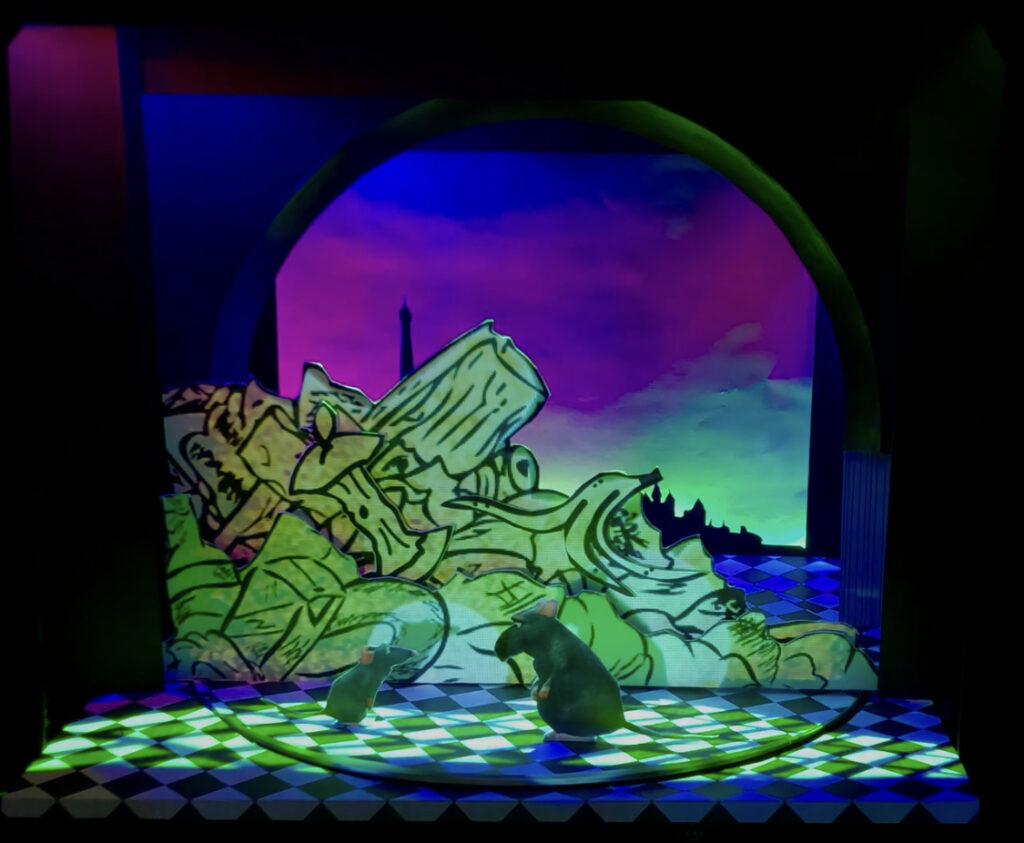
Shoebox Musical’s original set design for Ratatouille the Musical. Photo courtesy of Christopher Routh
It didn’t take long before another TikTok user, @ratatouillemusical, put out a call to organize the bits of musical floating around TikTok into Ratatouille the Musical. Their goal seems to be to convince someone to produce it on Broadway – already they have gotten the attention of actor Patton Oswalt (who gave voice to Remy the rat in the Pixar film, and who tweeted out Routh’s contribution to the musical), Broadway composer Joe Iconis, of Be More Chill fame, who wrote an original song about Remy and his relationship to the critical establishment, and producer Ken Davenport whose “video pitch” to TikTok-ers to be the producer to bring their musical to Broadway has been met with mixed reviews. But for all the Broadway buzz, perhaps the goal is short-sighted, for the moment the project is given over to commercial producers who will need to package it for consumption, the musical as it is – crowd-sourced, spontaneous, collaborative, and free – will be lost. Ratatouille the Musical is already here, and it is democratic. The site of performance is not the Broadway stage, but the internet and anyone with a device and a connection can access it, view it, and add to it.
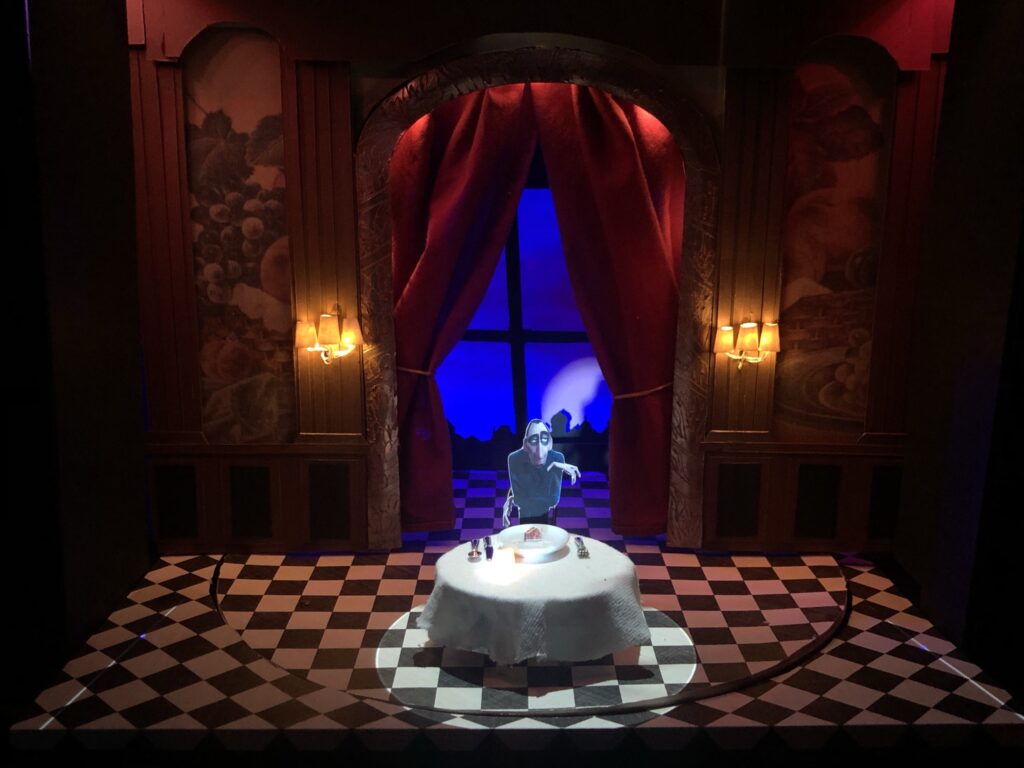
Shoebox Musical’s original set design for Ratatouille the Musical. Photo courtesy of Christopher Routh
There is little doubt that the pandemic has been a major factor in spurring the Ratatouille the Musical craze on TikTok. Avid theatergoers who crave live theatre have been missing Broadway since the Covid shutdown. Composer and arranger Daniel Mertzlufft, a contributor to Ratatouille the Musical who also spawned another internet musical entitled Grocery Store: A New Musical says “people are longing for theater right now, because there isn’t any. I think a lot of us have gone to this platform for that reason as well.”
Routh agrees. “I get to watch a Broadway show in my own room! Who doesn’t want that? And all the support I’m getting from people seeing my work puts a smile on my face. So many people have reached out to me, telling me that they want to do something similar, and asking me how they can start. I have had theater students from high school to university asking me questions and admiring my work. It feels amazing to be able to help other people do what they love.”
When asked about his future, Routh replies, “someday I would love to see one of my set designs built in real life, whether it’s in a museum or a showroom or on a Broadway stage. That would be amazing! I’d even consider working as an Imagineer at Disney. What they do is very similar to what I love. For example, I don’t know if you’ve ever seen them, but Disneyland has these shop windows on Main Street that are scenes from different Disney movies. They are lit and automated, just like my set models. They are the most amazing displays I have ever seen, and they are so magical. They have been an inspiration to me for so long.”
In the meantime, Routh plans to continue to make models for himself to enjoy musical theater. “It’s like I own my own theater”, he says. “I can put on any production I want, and I get to wear all the hats: director, stage manager, set designer, lighting designer. It’s so much fun! What can I say? I love theatre. I’ve been thinking of doing a live set model performance on my Tiktok. I think my viewers will love that.”
I can hardly wait!

Christopher Routh, a.k.a. “Shoebox Musicals”. Photo courtesy of Christopher Routh.
This post was written by the author in their personal capacity.The opinions expressed in this article are the author’s own and do not reflect the view of The Theatre Times, their staff or collaborators.
This post was written by Michael Schweikardt.
The views expressed here belong to the author and do not necessarily reflect our views and opinions.

